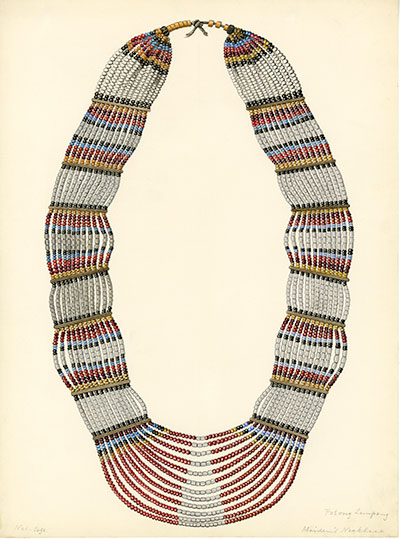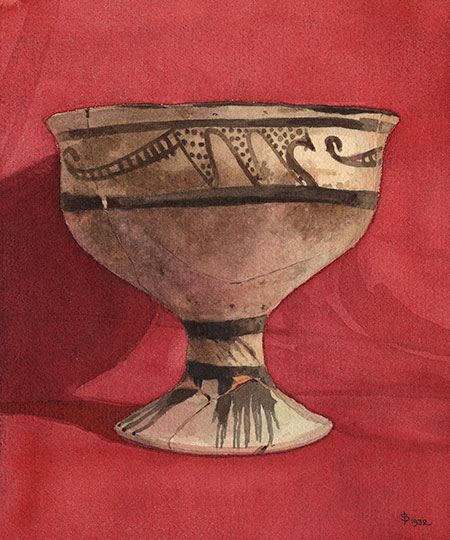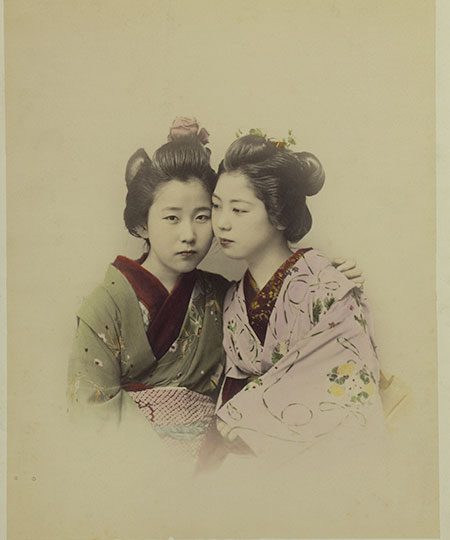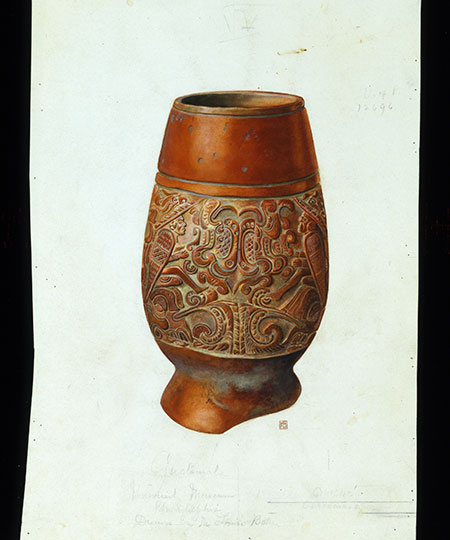
Tunjung girl’s necklace of glass beads. Mahakam River, Kalimantan, Borneo, 1896–1897 (UPM object #P17). Drawing by unknown artist, ca. 1900. Gift of Alfred C. Harrison, Jr. UPM image #238716.
The 1839 invention of photography was revolutionary, and instantly useful to archaeologists, changing the nature of documenting the past. Yet reproducing color in photographs remained a technological and costly challenge, and before color photography was developed by Kodak in the 1930s, the Penn Museum hired artists to draw materials for publication and exhibition. Year of Color: Art in the Archives renews our appreciation for color illustrations, lithographs, early black and white photography, and monochromatic images retouched in color.
The Museum Archives hosts this special exhibition that explores the concept and value of color imagery, the spectrum of techniques used, and the artistry of Museum illustrators to convey the textures, dimensions, and inscriptions of objects in the Museum’s collection. Among the more than 40 images on display are detailed watercolor paintings of Maya pottery and the Sumerian bull-headed lyre by M. Louise Baker, Museum Artist from 1908 to 1936. Also featured are a stunning portrait of Slow Bull by Edward S. Curtis, an illustrated translation of the famous Rosetta Stone published by the University of Pennsylvania’s Philomathean Society in 1856, and a color lithograph of Czar Nicholas II of Russia, a souvenir of his coronation in 1896.





